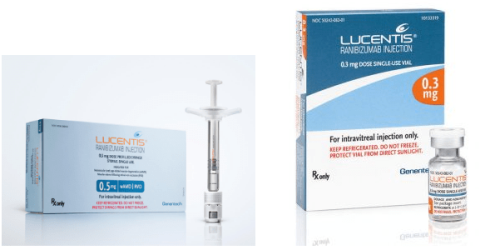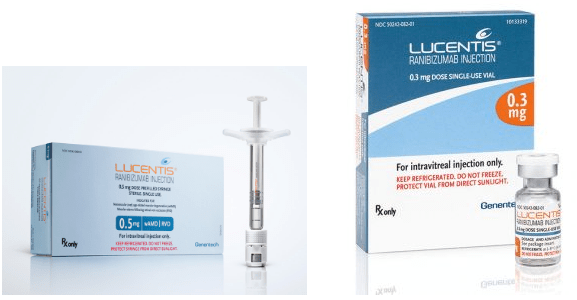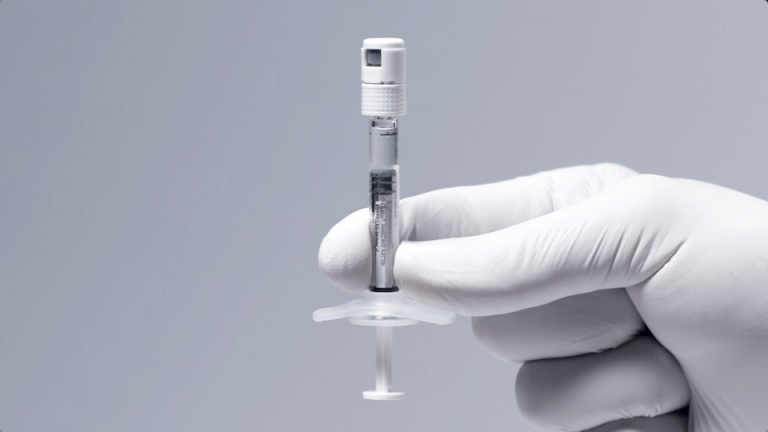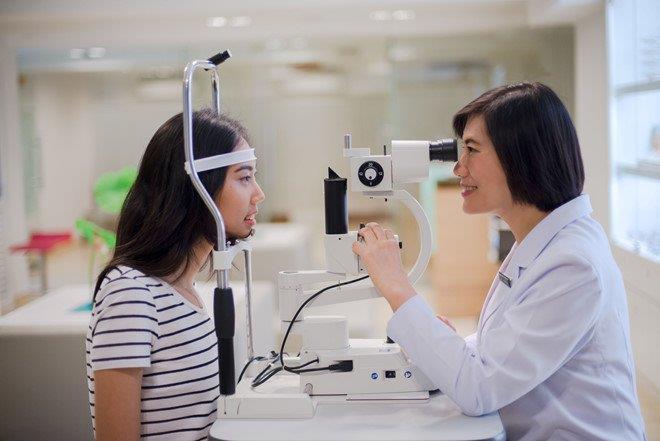Lucentis drug (ranibizumab): What should be noted when used for eye injection?

Lucentis (ranibizumab) is an injection used to treat eye diseases. How to use Lucentis drug has points to note that patients need to know during use. Let's find out with SignsSymptomsList what Lucentis is, what diseases it treats, instructions for use and side effects of the drug through the article below.
Active ingredient name : ranibizumab.
Drugs with similar effects : Accentrix, Avastin.
content
- 1. What is Lucentis (ranibizumab) and what is it used to treat?
- 2. In what forms is Lucentis (ranibizumab) used?
- 3. How is Lucentis (ranibizumab) used?
- 4. What precautions and precautions when taking Lucentis (ranibizumab)?
- 5. In which cases should you absolutely not use Lucentis (ranibizumab)?
- 6. What are the side effects of Lucentis (ranibizumab)?
- 7. Can pregnant and lactating women take Lucentis (ranibizumab)?
- 8. How do patients with liver and kidney failure use Lucentis (ranibizumab)?
- 9. What drugs can interact with Lucentis (ranibizumab)?
- 10. What is the market price of Lucentis?
- 11. How should Lucentis (ranibizumab) be stored?
1. What is Lucentis (ranibizumab) and what is it used to treat?
What is Lucentis is probably a question that many people wonder. First, it is important to know that the active ingredient of the drug is ranibizumab , which is a monoclonal antibody that helps prevent angiogenesis.
Lucentis injection (ranibizumab) is indicated for the treatment of:
- Wet age-related macular degeneration (AMD).
- Visual impairment diabetic macular edema (DME).
- Visual impairment macular edema secondary to branch retinal vein occlusion (BRVO) or central retinal vein occlusion (CRVO).
- Diabetic retinopathy (DR)
- Visual impairment due to choroidal neovascularization secondary to pathological myopia (mCNV )
2. In what forms is Lucentis (ranibizumab) used?
Lucentis is available in the following dosage forms:
Disposable syringe containing 0.05 ml of ranibizumab solution includes 2 types
- Solution 10 mg/ml (Lucentis 0.5 mg)
- Solution 6 mg/ml (Lucentis 0.3 mg)
Single dose vial containing 0.05 ml ranibizumab solution includes 2 types
- Solution 10 mg/ml (Lucentis 0.5 mg)
- Solution 6 mg/ml (Lucentis 0.3 mg)

Medicine Lucentis
3. How is Lucentis (ranibizumab) used?
3.1. Wet age-related macular degeneration (AMD):
Lucentis 0.5 mg (0.05 ml) is administered by intraocular injection in each eye once a month (approximately 28 days).
- Patients can be treated for 3 consecutive months. After that, the treatment interval should be extended, but no more than every 2 weeks.
- Patients can also be treated for 4 consecutive months, followed by 1 dose every 3 months and evaluated regularly.
3.2. Visual impairment macular edema secondary to branch retinal vein occlusion (BRVO) or central retinal vein occlusion (CRVO):
Lucentis 0.5 mg (0.05 ml) is administered by intraocular injection in each eye once a month (approximately 28 days).
3.3. Diabetic macular edema (DME) and diabetic retinopathy (DR):
Lucentis 0.3 mg (0.05 ml) is administered by intraocular injection in each eye once a month (approximately 28 days).
3.4. Visual impairment due to choroidal neovascularization secondary to pathological myopia (mCNV):
Lucentis 0.5 mg (0.05 ml) is used by intraocular injection in each eye every 1 month (approximately 28 days) for up to 3 months. Patients can discontinue use if necessary.
4. What precautions and precautions when taking Lucentis (ranibizumab)?
Notes and cautions when using Lucentis:
- The use of Lucentis in children and adolescents is not recommended.
- Use the same dose for the elderly. Experience is limited in patients with diabetic macular edema (AME) over 75 years of age.
- Intraocular injection can cause endophthalmitis, glaucoma, retinal detachment, retinal tear, and therapeutic traumatic cataract.
- Transient glaucoma within 60 minutes of Lucentis injection and persistent glaucoma.
- There is a potential risk of intraocular arterial thromboembolic events. Patients with risk factors for stroke, including a history of stroke or transient ischemic attack.
- Care should be taken when initiating Lucentis treatment in patients with age-related macular degeneration (AMD) at risk for retinal pigment epithelium tear.
- Lucentis has the potential to induce an immune response.

Notes and precautions when using Lucentis
5. In which cases should you absolutely not use Lucentis (ranibizumab)?
Patients must absolutely not use Lucentis in the following cases:
- Infection of the eye or the area around the eye.
- Hypersensitivity to any component of the medication.
6. What are the side effects of Lucentis (ranibizumab)?
The most common side effects of Lucentis are:
- Inflammation in the eyeball, retinal hemorrhage, visual disturbances, eye pain.
- Eye floaters, also known as cataracts, are black dots in your vision that look like flying flies. But will disappear when the eyes try to look directly at them.
- Increased intraocular pressure.
7. Can pregnant and lactating women take Lucentis (ranibizumab)?
Women of childbearing potential: An effective method of contraception should be used during treatment. For women who want to become pregnant and are already being treated with ranibizumab, wait at least 3 months after the last dose.
Pregnancy: There are no clinical data on the use of Lucentis in pregnant women. Therefore, Lucentis should not be used during pregnancy unless the potential benefit outweighs the potential risk.
Lactation: It is not known whether ranibizumab is excreted in human milk. As a precaution, it is not recommended to use Lucentis while breastfeeding or not to breastfeed while using Lucentis.
8. How do patients with liver and kidney failure use Lucentis (ranibizumab)?
There are no special limitations for patients with hepatic impairment and no dose adjustment is required in patients with renal impairment.
9. What drugs can interact with Lucentis (ranibizumab) ?
There have not been any drug interaction studies with Lucentis. So be careful and need to provide information about the medicines you are using to your doctor and pharmacist before using Lucentis.

What drugs may interact with Lucentis?
10. What is the market price of Lucentis?
Currently, the price of Lucentis drug is about 13,000,000 - 14,000,000 VND/bottle.
11. How should Lucentis (ranibizumab) be stored?
- Lucentis should be refrigerated at 2º-8ºC. NOT FROZEN.
- Protect the Lucentis syringe and vial from light and store in the carton.
- Do not open the seal of the Lucentis syringe holder until use.
Lucentis, with the active ingredient ranibizumab, is used for intraocular injection to treat eye diseases. Through the article, we have understood what Lucentis is, its uses and instructions for use. However, improper use of the drug can harm the eyes. Therefore, it should be used after consulting a doctor or pharmacist. Go to the eye specialists at reputable hospitals and clinics to get the most appropriate advice from the doctor.